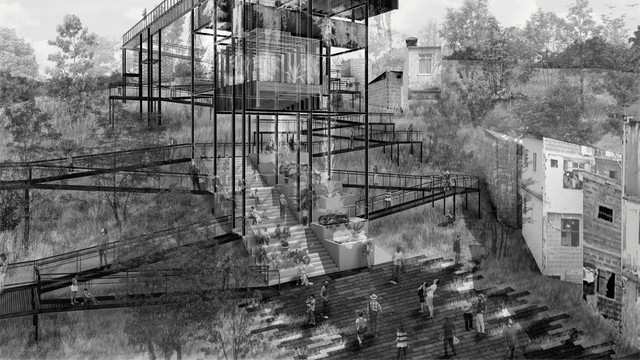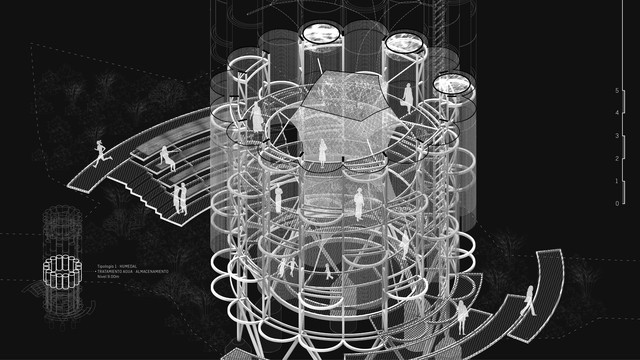Infrastructural Gardens 2020, Colombia, Bogotá
Making Moravia’s landscape visible







Infrastructural Gardens addresses the informal city’s urban processes within the Colombian context. Especially, this “informal” approach to architecture that Manuel Gausa explains as “a dynamic that releases energies” (p.343, Metapolis, 2003), could drive the interrelation between the community’s Know-hows and territorial complexity to ultimately design these urban clusters. The conventional idea of slums as an attachment to the formal city has undervalued its informal counterpart’s input to the Hybrid city, one with a transformative nature, a high social identity and compact densification. This proposal challenges genericness, land speculation, and political oblivion within these informal hubs in order to create a contemporary Hypercluster.
This project addresses the need to make visible the social, memory and ecological qualities of the community of Moravia through vertical public space. A series of urban obelisks inserted in the informal fabric establish 3 vertical hubs which active the neuralgic ecosystems and infrastructure of the neighborhood, which then unleash new dynamics that reveal other hubs that attend to the community’s transformation in time. Each vertical hub adopts a specific strategy: water filtration, circular recycling or ecological remedy, according to its social and ecological responsibility within its immediate environment. The Hydric Tower responds to the filtration of rainwater to meet the need of homes in the neighborhood, but also establishes a spatial relationship with the territorial water, which arrives through the channels of the streams. The water garden inside creates a didactic instrument of water filtration practices for the community, where a place for learning and contemplation is built through the materiality of architecture. The Recyling Tower designs a pedagogical atmosphere around the recycling practices and empirical learning. Therefore, its placement responds to building a hub that mixes recyclers and student communities in the public space. The conceptual garden within this artifact materializes in a place where knowledge and learning can be formally exchanged with the dynamics of the city. The Biotic Tower focuses on the ecological condition by generating new fertile soil from the greenhouse planters. But, it also addresses an orographic responsibility of the contaminated soil by responsibly extracting methane gas and stabilizing the ground through the weight generated by the biotic mass in the planters to minimize landslide risks. The appropriation of the citizens is evidenced, not only in the nursing of the vertical garden planters, but also in the consolidation of a hub for the community’s urban and social activities.
https://www.behance.net/gallery/110831713/Jardines-Infraestructurales-Undergraduate-Thesis
Poster
Details
Team members : Daniel Monroy
Supervisor : Claudio Rossi
Institution : Universidad de los Andes
Descriptions
Credits
Daniel Monroy
Daniel Monroy
Daniel Monroy
Daniel Monroy
Daniel Monroy
Daniel Monroy
Daniel Monroy
Daniel Monroy